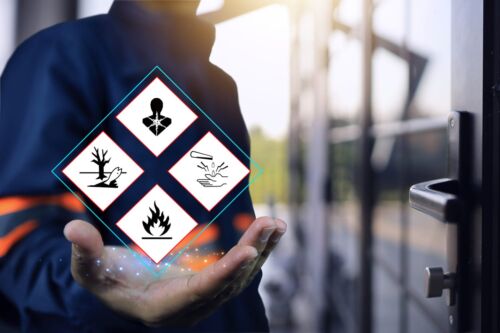Menu
Are Industrial Injuries and Occupational Diseases the Same Thing?
August 27th, 2025

Workers in Washington’s various industries face many inherent hazards on a daily basis. Those who suffer injury or disease in connection with their employment may be entitled to file a Workers’ Compensation claim. While Washington law recognizes both industrial injury claims and occupational disease claims, it is important to understand the difference between them to determine your eligibility.
What is the Difference Between Industrial Injuries and Occupational Diseases?
The main difference between these types of claims is how they occur. Industrial injuries typically happen due to a sudden one-time event, such as an accident. Occupational diseases develop over time due to repeated exposure to hazardous conditions in the workplace.
Apart from how these types of claims arise, one of the most important distinctions is the amount of time a worker has to file for Workers’ Compensation benefits with the Washington State Department of Labor and Industries (L&I). For industrial injuries, a worker has one year from the date of the injury to file a claim. Workers who have suffered an occupational disease have two years to file a claim from the date a doctor diagnoses the illness as work-related.
What is an Industrial Injury?
An industrial injury is a sudden, traumatic happening while a worker is performing their job duties. In other words, there is a specific event that causes the harm the worker suffered — and the injury is a direct consequence of that event. Industrial injuries can arise due to the following types of accidents:
- Lifting or carrying - Injuries to the spine or extremities often occur while lifting or carrying items while working.
- Slip and falls — Slip and fall accidents can occur for a variety of reasons in the workplace, including wet floors, improper footwear, defective floor mats, and lack of hazard signs.
- Trip and falls — Trip and falls can occur due to debris on the floor, uneven flooring, loose wires, and various other factors.
- Machine-related accidents — Some of the most common types of industrial injuries are caused by machines and equipment in the workplace. These types of accidents can arise due to defective machinery, improper training in how to use the equipment, and insufficient safety measures.
- Burns — Work-related burns can occur in connection with thermal, chemical, or electrical sources when safety measures are not followed or adequate protective gear is not provided.
- Falls from heights — Falls from ladders, scaffolding, roofs, platforms, or other elevated surfaces can occur due to lack of guardrails, improper construction, inadequate lighting, slippery surfaces, and inadequate fall protection.
Depending on the facts and circumstances of the accident, an industrial injury can be severe or even catastrophic. Common industrial injuries can include nerve damage, crush injuries, broken bones, soft tissue injuries, amputation, and fractures. These injuries may require an extensive amount of medical treatment and a worker may be unable to return to their full duties, if they are able to work at all.
Importantly, there are specific procedures that must be followed and certain steps to take to establish an industrial injury claim in Washington. The employer should be notified as soon as possible about the injury. It is crucial to seek medical attention immediately from a doctor who handles L&I claims to demonstrate the link between the injury and the employment. The medical provider is then responsible for completing an accident report form.
What is an Occupational Disease?
An occupational disease is a condition that arises “naturally and proximately” from a worker’s employment. They are typically due to repetitive workplace conditions or exposure to toxins. In contrast with industrial injuries, occupational diseases may develop gradually over the course of time.
In order to be entitled to file a Workers’ Compensation claim for an occupational disease, a physician must present an opinion that it is more probable than not that the work conditions are the cause of a disease — or they aggravated a pre-existing condition. In addition, objective medical findings are required to support the diagnosis and the work environment must have been the proximate cause of the illness.
Some common occupational diseases include the following:
- Carpal tunnel syndrome
- Rotator cuff injuries caused by lifting heavy boxes and objects
- Skin diseases caused by chemical exposure
- Respiratory illnesses from chemical exposure
- Asthma in connection with toxic exposures
- Hearing loss due to noise exposure
- Cancer due to asbestos exposure
If a work-related exposure contributes to the development or worsening of a condition, then that condition will be deemed work-related.
Contact an Experienced Washington Workers’ Compensation Attorney
If you were hurt on the job or diagnosed with an occupational disease, it is essential to have an attorney by your side who can guide you through the process of filing an L&I claim. A diligent Workers’ Compensation attorney can evaluate your case and help ensure you obtain the benefits you deserve.
The Bellingham Workers’ Compensation attorneys at Robinson & Kole provide reliable representation to injured workers throughout Washington State and work to obtain the best possible outcome in every case.
If you were hurt on the job or diagnosed with an occupational disease, we welcome you to contact us for a free consultation by calling 360-671-8112 or by using our online contact form. Se habla Español.



